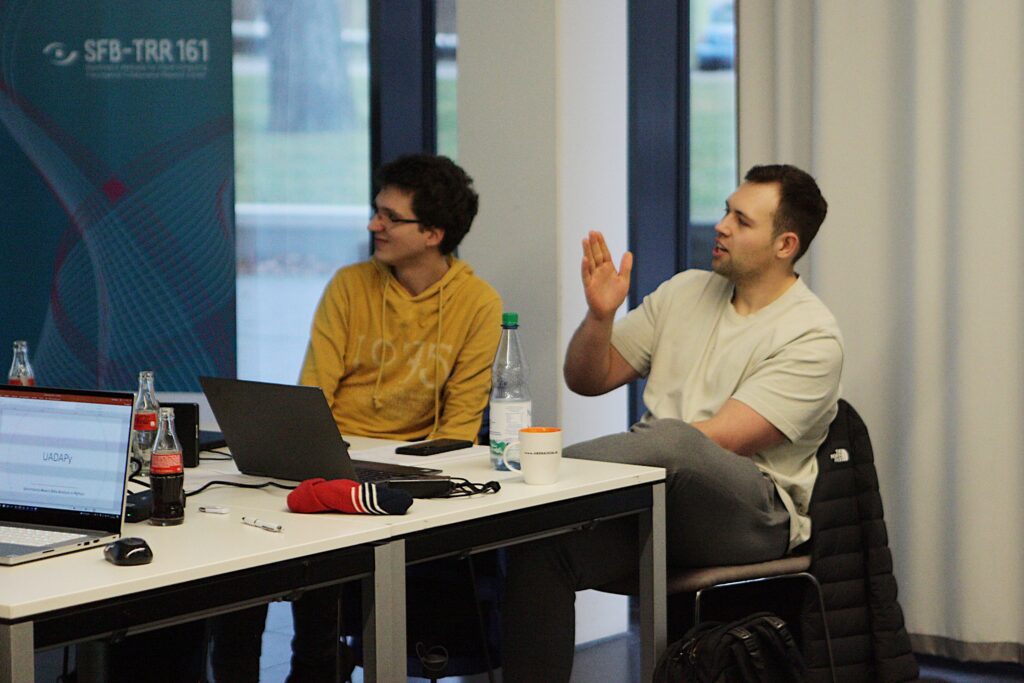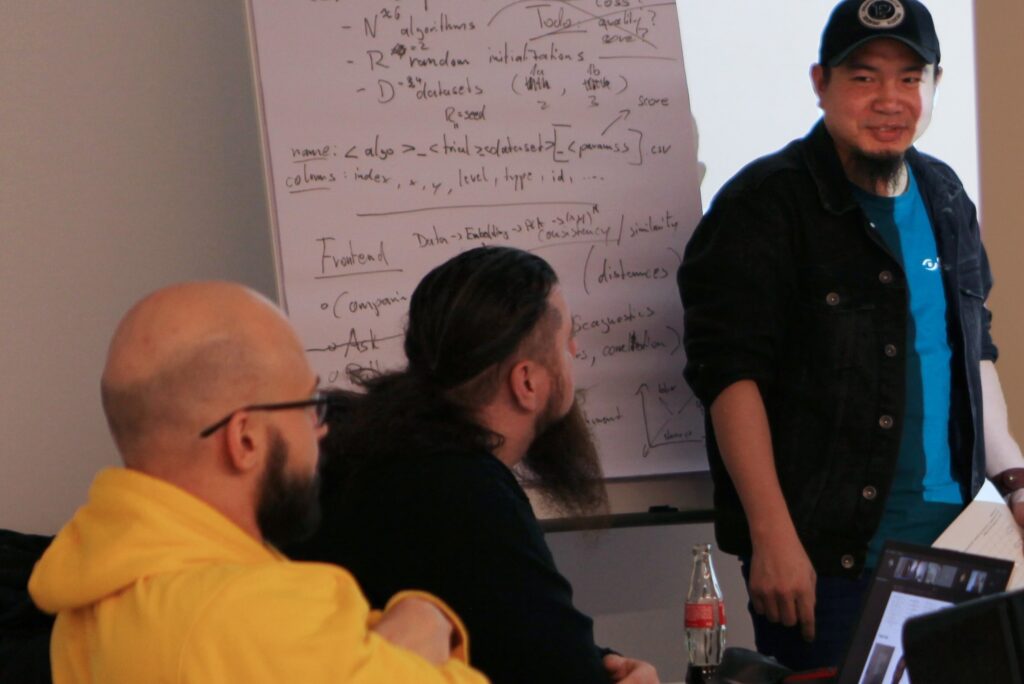From January 30 to February 1, 2024, a group of SFB-TRR 161 researchers gathered in Stuttgart for our first hackathon. Their aim: developing visualization tools for eye-tracking data analysis with a focus on dimensionality reduction techniques.
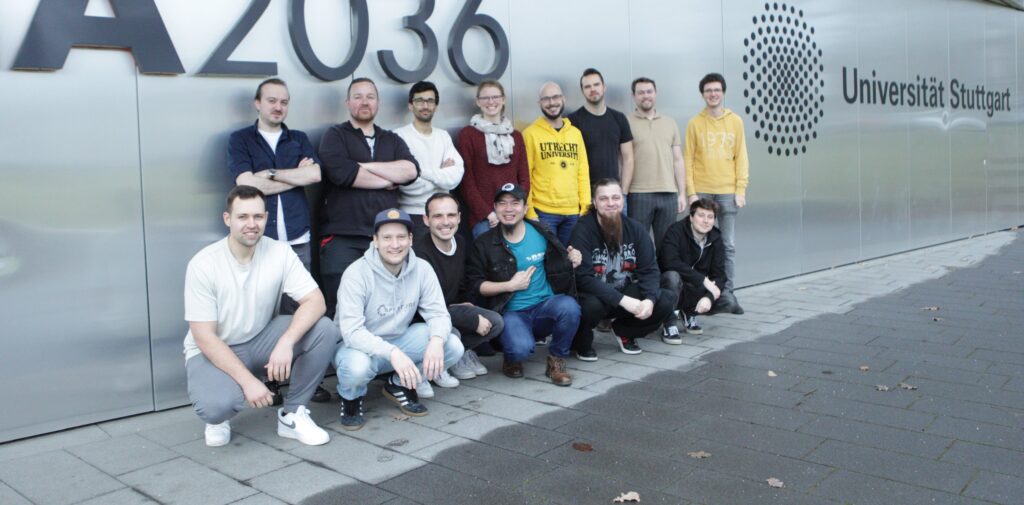
In a transregional, collaborative research center such as the SFB-TRR 161, online meetings often seem to be the easiest way to communicate and exchange ideas for collaboration between domain experts and visualization designers. After all, many of us work in different disciplines and are located not only at different institutes, but even at different universities. Especially after the many online meetings during the COVID-19 pandemic, though, we were eager to get together in person and to offer more on-site, collaborative activities.
Thus, in January 2024, we organized the first SBFB-TRR 161 Hackathon under the motto DR4ET – Dimensionality Reductions for Eye-tracking. We hoped that an in-person event like a hackathon would not only foster collaborative projects, but also allow domain experts and visualization designers to communicate more productively and allow them to implement their ideas right away before returning to their other projects.
The original idea for the hackathon came from our special interest group Dimensionality Reduction (DR SIG) and Dietmar Saupe, project leader of completed Project A05. Once the general direction of developing visualization tools for eye-tracking data analysis had been set, the DR SIG cooperated with the Uncertainty Visualization SIG (led by David Hägele) and the Eye-tracking SIG (led by Yao Wang) as well as Frederik Dennig (A03) to prepare the program. Via a proposal template, we asked domain experts to provide domain problems, motivation, data, and preliminary solution means such as data parser code.
We collected six proposals covering topics from Image Quality Assessment and Eye-Tracking Analysis to exporting the Uncertainty-aware Multidimensional Scaling code to other programming languages. Iteratively working with the SIGs, the domain experts provided us with excellent topics and data with strong motivations. Due to the many topics, we sent the proposals to the registered participants to vote and select the topics they would join in the hack. In the end, four topics were kept.
After the selection round, four teams were formed to work on the selected topics:
- “Multidimensional Embedding of Triplet Comparisons for Image Quality Assessment” (Mohsen Jenadeleh and Dietmar Saupe)
- “Mobile Eye-Tracking in an Artwork Gallery” (Maurice Koch and Kuno Kurzhals)
- “Understanding Key Parameters in Interactive Visualization Design Process” (Yao Wang)
- “Improving UAMDS Performance and Toolbox for Uncertainty-Aware Dimensionality Reduction” (David Hägele)
The four teams started hacking their problems at 12:00 PM on the 30th of January, and the Hackathon ended at 4:00 PM on the 1st of February. With the ARENA 2036 on the University Campus Stuttgart Vaihingen, we were lucky to find a venue that already had some experience with hackathons and was able to meet all our needs—including coffee, drinks, and snacks at all times
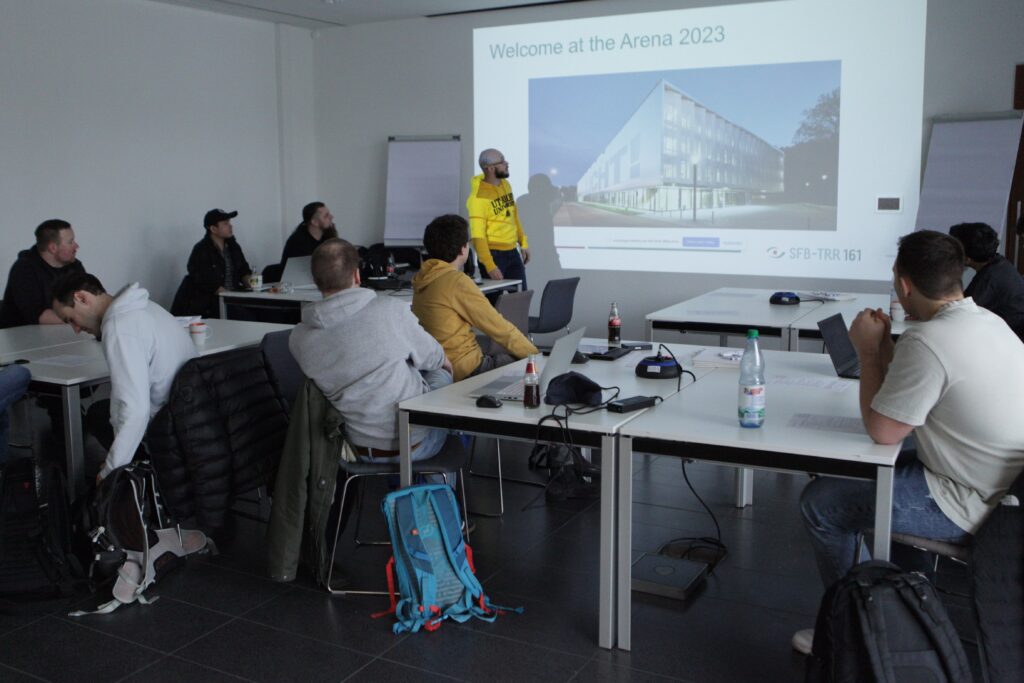
Participants of the DR4ET Hackathon in Stuttgart. Image: Christina Warren 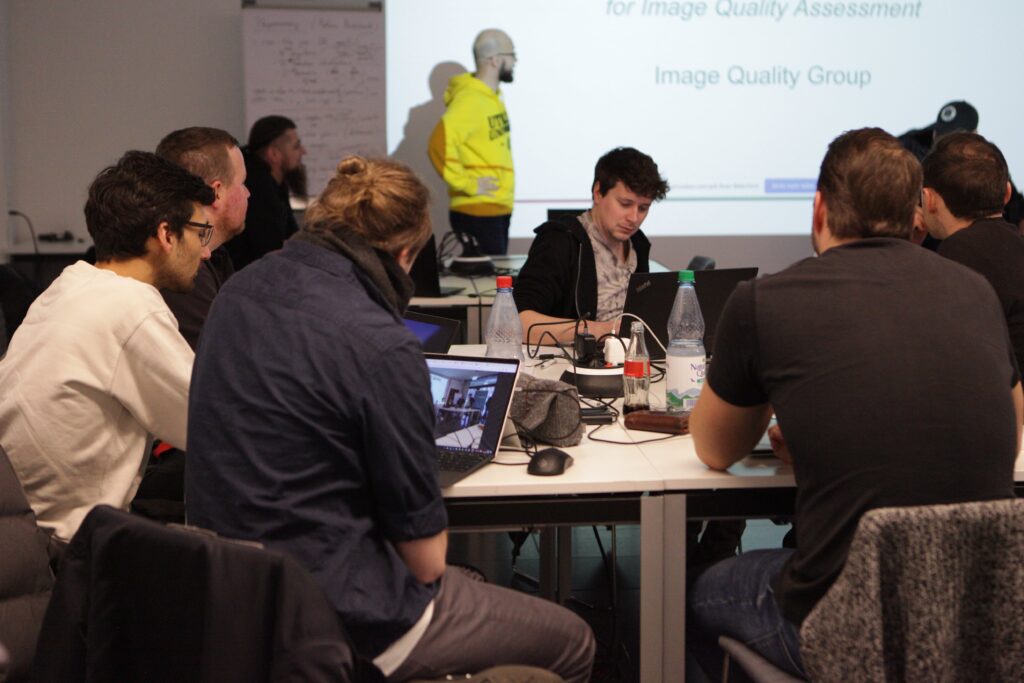
Participants of the hackathon working in their project groups. Image: Christina Warren
After many hours of “hacking hard,” the teams delivered four presentations before the jury committee consisting of Dieter Schmalstieg, Andreas Bulling (A07), and Benedikt Ehinger (D05). In the end, four certificates were granted to the teams. “The Longest Code Award” went to team (2), “The Out-of-the-box Award” to team (3), “The Most Complete Solution Award” to team (4), and “The Aesthetic Design Award” to team (1).
Our first hackathon was not only a fun, but also a productive event. It brought together colleagues from different institutes and disciplines and allowed them to collaborate on four topics. So far, two papers from the Hackathon have been published: “NMF-Based Analysis of Mobile Eye-Tracking Data,” published in ETRA (2024) as a workshop paper by team (2), and “An Image Quality Dataset with Triplet Comparisons for Multi-dimensional Scaling” published in QoMEX (2024) as a short paper by team (1). An eye-tracking dataset related to the Hackathon was also published in DARUS, the data repository of the University of Stuttgart: “Dataset for NMF-based Analysis of Mobile Eye-Tracking Data” by team (2). All teams continue working on their topics to publish their work or to strengthen their results and publications.
I also need to mention here, though, that for the hackathon to be such a successful event, it needed to be preceded by a long “Think-athon” that lasted several months. From the emergence of the original idea to preparing the proposal template for domain experts, every step was iterated over within the DR SIG for months and contributed to by members of the other SIGs. It also took time for domain experts to write up proposals that were easy to understand for visualization designers. The proposals offered domain data, problems, and motivation; the visualization designers had to develop and implement technical solutions during the event. A lot of thinking has been done in all the steps leading to the final outcomes, i.e., software, visualization tools, and papers. It was also a lot of work from the organizational side. The organization team spent much time developing the format and preparing every step of the final event, from working with proposal preparation, proposing time slots, collecting information about potential participants, and communicating with participants for feedback.
Despite the long time preparing the hackathon and all the organizational work, the DR4ET Hackathon will continue to be a nice memory for all of us. During the two days, we had the chance to have some fun with our topics and to be productive working with both new and old colleagues. That the first publications based on the hackathon were published only weeks after the event exceeded our expectations, which were, to quote our speaker Daniel Weiskopf, “already very high”. We are currently brainstorming topics and activities for another hackathon and hope to make this a yearly SFB-TRR 161 event.

